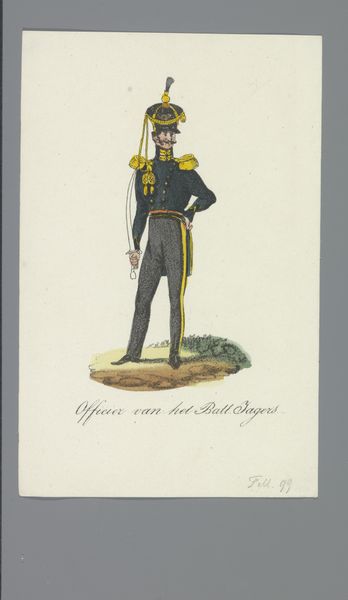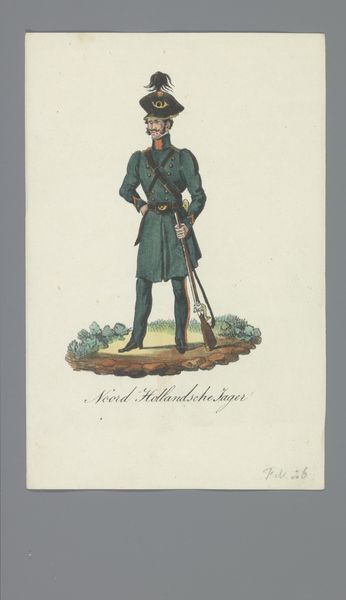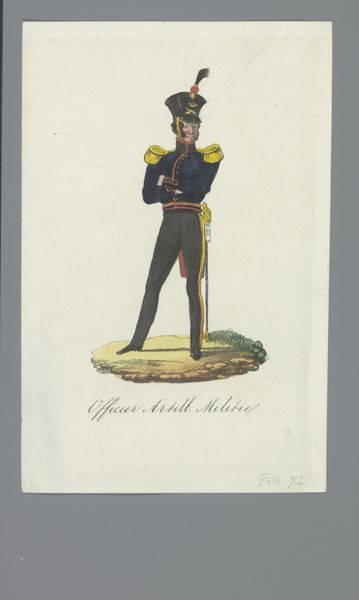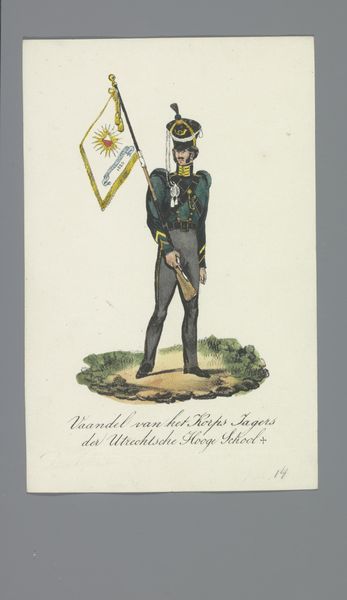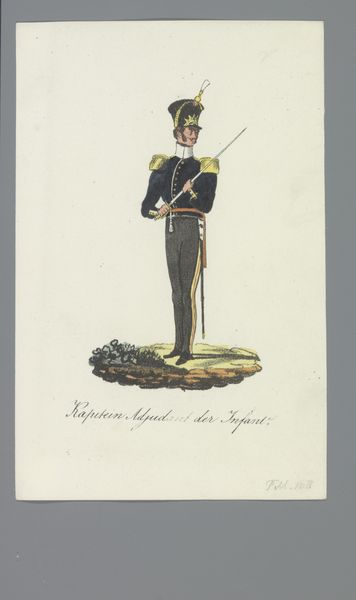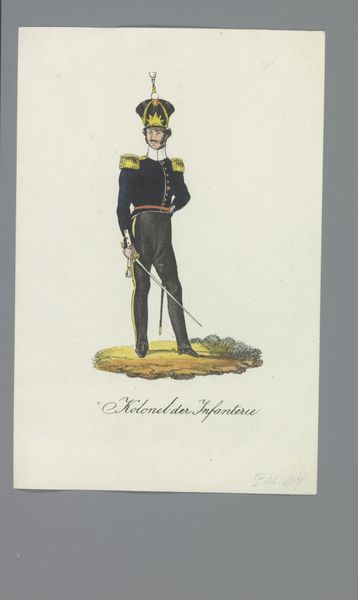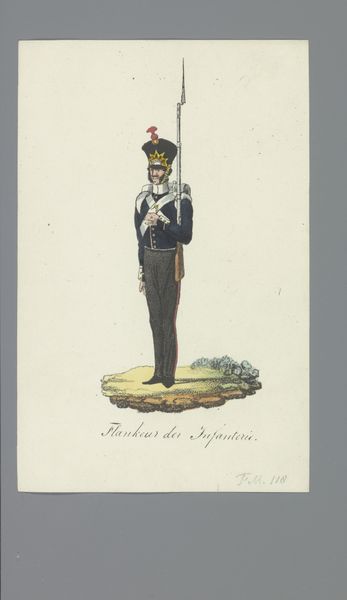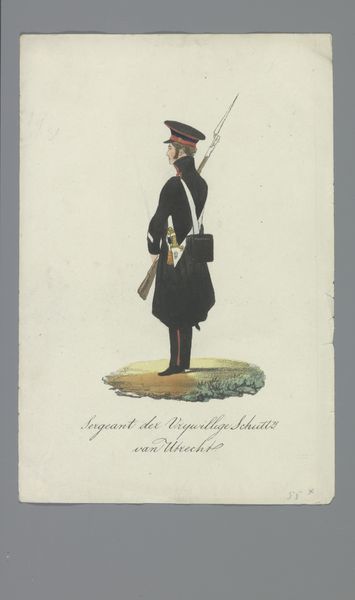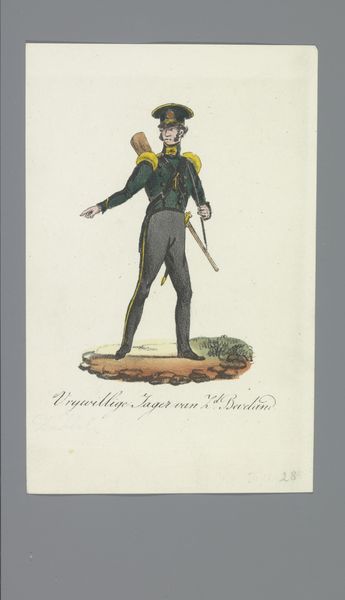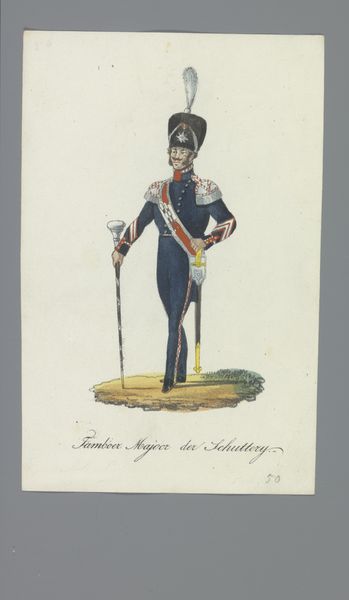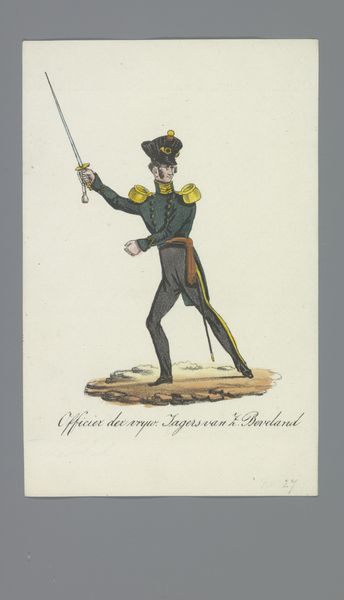
painting, watercolor
#
portrait
#
painting
#
watercolor
#
romanticism
#
costume
#
history-painting
#
academic-art
#
watercolor
Dimensions: height 170 mm, width 110 mm
Copyright: Rijks Museum: Open Domain
Curator: Here we have "Soldaat van het 2 Batt. Jagers" – that translates to "Soldier of the 2nd Battalion, Riflemen"–a watercolor painting dating from around 1835 to 1850, attributed to Albertus Verhoesen. It's currently housed right here at the Rijksmuseum. Editor: My first thought is "regal." It's such a simple composition, just one figure, but there's something very proud and almost romantic in his stance and expression. It is what makes the work stand out for me. Curator: Verhoesen made quite a name for himself specializing in military scenes, particularly cavalry battles and soldiers. His art was shown and sold throughout the Netherlands and he became well-known for this niche in Academic and Romantic Art. This painting reflects both of those movements, doesn’t it? Editor: Absolutely, though it raises questions for me. How does a seemingly objective representation of a soldier, which in and of itself presents specific cultural roles that were accepted at that time in society, engage with ideas about masculinity and power structures of that era, when warfare often reinforced dominant societal norms. Curator: A fascinating point, especially if we consider the Dutch colonial context. Such pieces would likely have served to inspire the public confidence in the military at that time and promote patriotic feelings that often served a purpose during that era, given all the political upheavals and struggles across Europe and beyond. Editor: And isn't there something unsettling about that? I can’t help but read this work as propaganda—the romanticization of military force normalized violence and colonization, particularly through portraiture as we know. What stories are *not* being told, here? Who is rendered invisible? Curator: That critical lens is so vital for re-framing our perspective on these artworks from history. By understanding them through both technique, artistry, and historical context along with modern theory, we gain deeper insight and that’s important! Editor: I agree completely. Analyzing Verhoesen’s "Soldaat van het 2 Batt. Jagers" allows us to see not just the artwork, but the stories that artworks suppress and those that rise to prominence. It allows us to consider those in conjunction with one another to understand not only how an image can create an impact in culture, but its many roles and reasons behind that purpose as well.
Comments
No comments
Be the first to comment and join the conversation on the ultimate creative platform.
